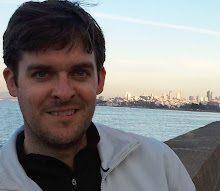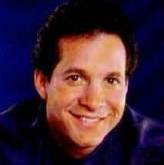Tuesday, March 10, 2009
Stealing just a few of your Seconds
Saturday, March 7, 2009
It all started with an E-mail
What am I getting at? Perhaps I’m delaying the inevitable - - that I’m going to criticize a recent film premiere I attended of SOMETHING EVIL COMES a.k.a. DEATH AMONG FRIENDS a.k.a. TIDAL JUSTICE - - check online for yourself and you’ll find that the film suffers from multiple title disorder just as badly as Joanne Woodward wrestled with her emerging multiple personalities in THE THREE FACES OF EVE. I can only assume: litigation.
It all began with an E-mail I had received from a good friend of mine: “Attention All Publicists: If you have a famous or semi-famous client who doesn’t have plans tomorrow night, send him or her over to our premiere tomorrow night and I’ll make sure they walk the red carpet …” Embedded in the e-missive was an albeit harmless trailer, however, it exuded sensations of straight-to-video and looked as if it had made its rounds at the American Film Market complete with all of the clichés found in most contemporary, low-budget cinema. Promises of complimentary popcorn and soft drinks as well as no prior engagement that evening sealed the deal. Once I procured street parking a ½ block away from the Regent Showcase Theater (catty-corner to Pink’s Famous Hot Dogs) and I arrived at the check-in desk in the lobby under the guise of a typical film premiere, I had found myself in a landscape (or dreamscape) that may have been concocted from the mind of Fellini - - not as intense as all that, mind you, but perhaps comparable to one of his daydreams.
It wasn’t so much a red carpet as it was a carpet that just happened to be red and flung onto a sidewalk. A male transvestite with bigger biceps and triceps than me (combined with another human being beside me, we wouldn’t be able to match his measure) wandered through the lobby. A flock of men dressed in drag soon joined the fray in line for refreshments before everyone was allowed entry into the theatre. Udo Kier (or an uncanny look-a-like) was in attendance: Baron Frankenstein and Count Dracula of Paul Morrissey’s / Andy Warhol’s magnificent visions of horror in the ‘70’s. Attire ranged from Armani to Adidas; Ferragamo to Forever 21. Simultaneously, the foyer abounded with flyers, posters and other ephemera touting the gay-themed here! Network. I never got the impression from the E-mail that the film leaned toward homoeroticism - - not that there’s anything wrong with that - - but the evening had an air of subversiveness. As I waited for my opportunity to capture a bag of popped corn and medium-sized Pepsi, I had a feeling this was not going to be the barnburner I knew it wasn’t going to be. That notion was confirmed upon entering the theatre that had a chilly disposition for the entirety of the evening. Not even the warmth of roughly 600 bodies could confront the awesome cold that may have been triggered by a faulty air conditioning unit.
Curtain up, lights dimmed and so goes the usual laundry list of introductions before the commencement of the film. Imagine a blend of TEN LITTLE INDIANS (here, there are six), THE NET (this time, no de-bugging program, just an E-mail) and TSUNAMI: THE AFTERMATH (in this film, only a tsunami, no critical aftermath) where a seemingly serious global thriller gets more laughs from its audience than dramatic pangs. Headlining the piece are Margot Kidder, William B. Davis, Nicholle Tom and a supporting cast of made-for / minor episodic talent and/or recent graduates of The Lee Strasberg Theatre and Film Institute. The film’s nemesis played by David Millbern showed venomous promise in his role in an otherwise dysfunctional thriller. The plot has the magnitude of a fictionalized book report devised by an elementary grade-schooler (my apologies go out to any grade-schoolers reading this critique): A lawyer / environmentalist believed to have sent an E-mail with some incriminating evidence involving off-shore drilling and a tsunami in Thailand is murdered in a corporate cover-up by an evil syndicate (led by Kidder). The lawyer’s sister (Tom) and her friends who are trapped in her family’s estate mansion during a rainstorm face off against the assassin sent to kill them - - because they are believed to have been sent the E-mail (yawn, chuckle). I found there to be more of a threat to global integrity in the 1984 made-for-television family film, THE NIGHT THEY SAVED CHRISTMAS.
Onto the acting, Margot Kidder (who has been wrestling with her own demons for several years) is repeatedly photographed from afar, usually donning sunglasses and most often enshrouded in darkness. Her on-screen demeanor in the film seems awkward and delivers her dialogue as if she’s under the influence of a narcotic of some sort. It’s as if the filmmakers wanted a name star, but didn’t know how to shoot her properly (or perhaps it was at aforesaid actor’s wishes?). Nicholle Tom does an adequate job of being the adhesive that holds her friends together amidst a living nightmare, but she exposes too much of that cheery sensibility with which she was imbued in The Nanny and even when she holds a gun (rather amateurishly), her woman-in-peril characterization is not terribly convincing. In point of fact, nearly every character (besides Tom’s house-master, Davis and to an extent, Millbern) struggles when holding a sidearm as if it were a hot potato. David Millbern plays a good heavy, rather, personifies the clichés of a clever assassin very well e.g. when he draws a psychological parallel between carving roast beef to getting what he wants from his victims - - “professionally” - - without making a mess.
What follows are a series of serious life moments converted to comedic inflection. Not in any particular order, a major character dies, yet no one seems to pay the detail any attention. Millbern’s character thrusts his knife through the hand of another houseguest to which the victim shouts with horror followed by, "that’s my guitar hand." The murder in the opening of the film involving a bathtub and a plugged-in television set worked because it took place off-camera - - the exploding law firm building and the death at the finale (again, involving water and a stray cable) employed wholly unbelievable special effects techniques which may have gotten an A+ for a student in Adobe Illustrator 101, but does not make for an effective FX shot in a feature film.
Come the finale, there are a handful of survivors and a ridiculous hey-everyone-let’s-put-on-our-overalls-and-build-an-extension-to-my-family’s-estate-mansion (!?!) -and-then-take-a-picture-to-commemorate-the-occasion. It makes me grin just thinking about it again. The crane pulls out to reveal a makeshift sign dedicated to the memory of one of the deceased followed by “school for children” - - which explains why Tom’s character repeats (multiple times) how they’re all “just trying to make a difference.” (MAJOR yawn, followed by roll of the eyes.) That’s almost as conceivable as John McClane and Hans Gruber breaking out into a romantic medley and dance number during DIE HARD. I did learn one thing from the evening: one should always be careful when opening an E-mail account.







